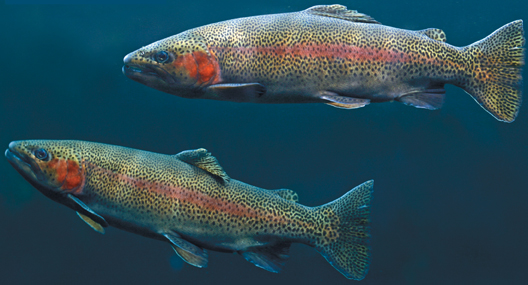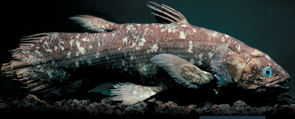OSTEICHTHYES: Bony fishes
The skeletons of these vertebrates are made of true bone. This clade includes the ancestors and living members of all “higher” vertebrate groups—including tetrapods.

Rainbow Trout
Actinopterygii: Ray-finned fishes
Almost all living bony fishes belong to a huge group called ray-finned fishes. The name ray-finned refers to the slender bony rays that are connected to one another by a layer of skin to form fins.
Sarcopterygii: Lobe-finned fishes
Seven living species of bony fishes, including lungfishes and coelacanths, are classified as lobe-finned fishes. Lungfishes live in fresh water, but coelacanths are marine. The fleshy fins of lobe-finned fishes are supported by strong bones rather than rays. Some of these bones are homologous to the limb bones of land vertebrates. Examples: lungfish, coelacanths
This clade includes the ancestors of tetrapods, so, technically, all living tetrapods (including us!) are Sarcopterygians! As a result, the bony-fish clade includes almost half of all chordate species!

Coelacanth
Table of Contents
- Formulas and Equations
- Applying Formulas and Equations
- Mean, Median, and Mode
- Estimation
- Using Measurements in Calculations
- Effects of Measurement Errors
- Accuracy
- Precision
- Comparing Accuracy and Precision
- Significant Figures
- Calculating With Significant Figures
- Scientific Notation
- Calculating With Scientific Notation
- Dimensional Analysis
- Applying Dimensional Analysis




